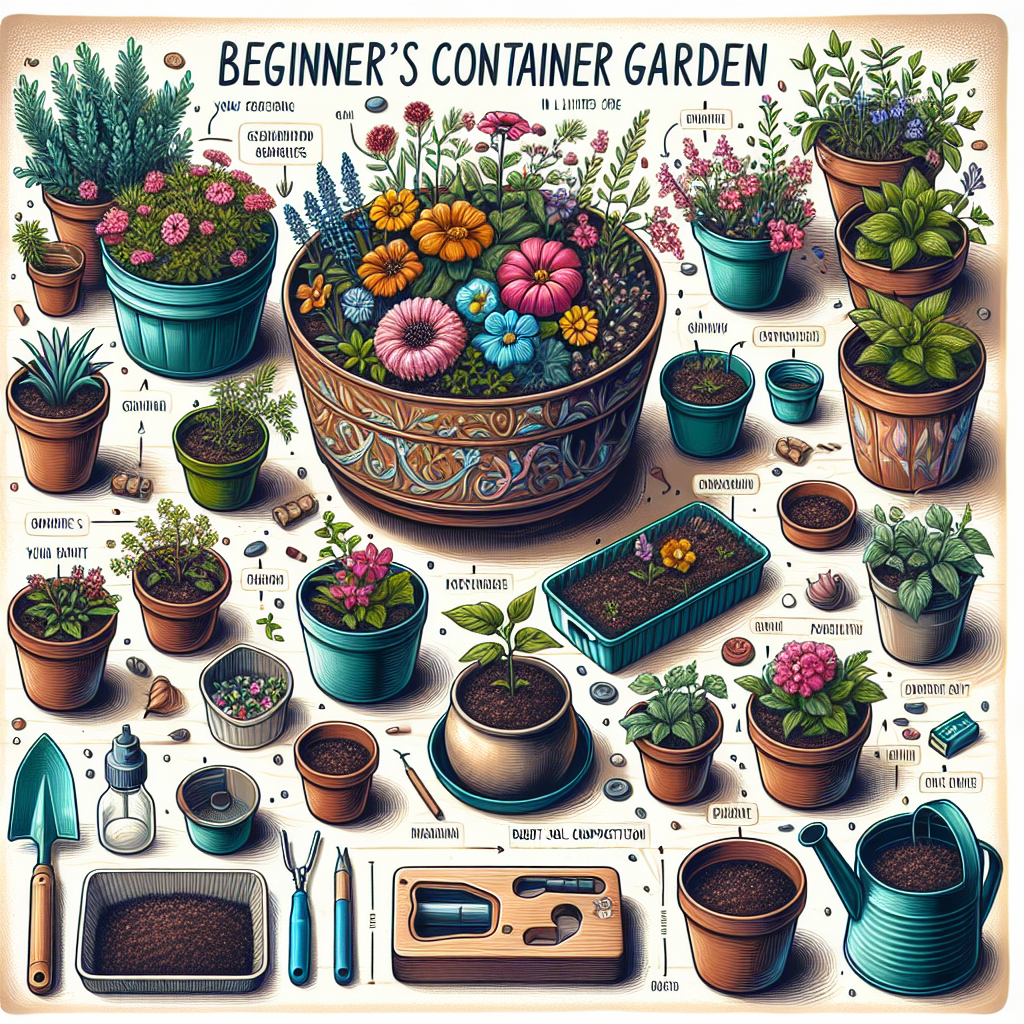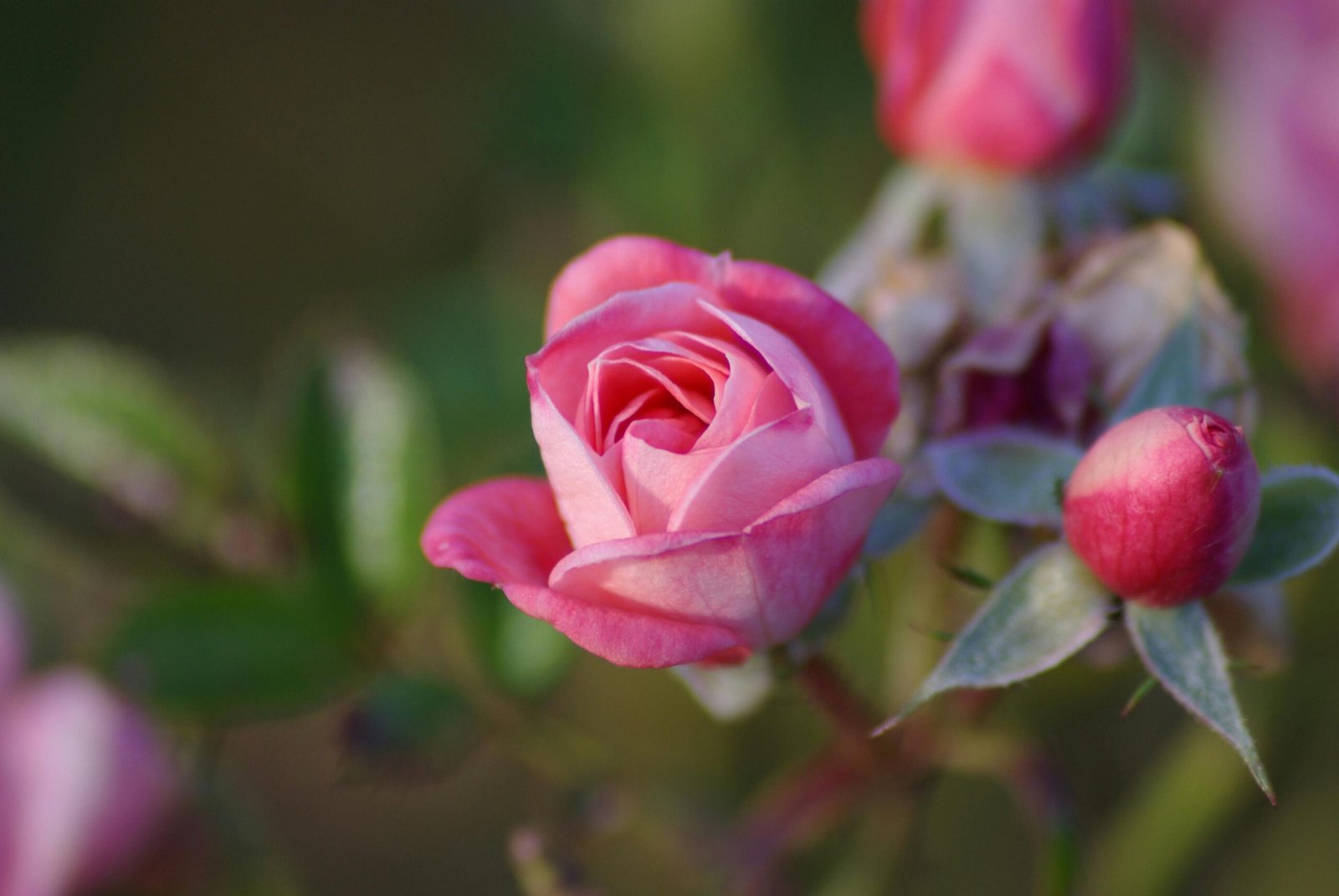
Are you a beginner looking to embark on your gardening journey? Look no further! In this article, we will guide you through the wonderful world of homemade container gardening. Whether you have a spacious backyard or a small balcony, container gardening is the perfect solution to bring nature closer to you. From choosing the right containers to selecting the perfect plants, we will cover all the essentials to help you create a thriving garden of your own. Get ready to dig in and discover the joys of homemade container gardening!
Choosing the Right Containers
Size and Depth
When it comes to choosing the right containers for your homemade container garden, size and depth play a crucial role. The size of the containers should accommodate the growth of the plants you intend to grow, so they have enough space for their roots to establish. Small plants, such as herbs or annual flowers, can thrive in containers as small as six inches in diameter. On the other hand, larger plants, like vegetables or fruit trees, require containers that are at least 12 inches in diameter or larger.
The depth of the containers is equally important. Most plants need a depth of at least six inches for their roots to spread and grow properly. If you are planning to grow deep-rooted vegetables, like carrots or radishes, consider containers that are at least 12 inches deep.
Drainage
Proper drainage is essential for the health of your plants. When excess water cannot drain from the containers, it can lead to root rot and other issues. Look for containers with drainage holes at the bottom to allow excess water to escape. If your chosen containers do not have drainage holes, you can drill them yourself or place a layer of small rocks or pebbles at the bottom of the container to create a space for water to collect before it reaches the roots.
Material
Containers come in a variety of materials, including clay, plastic, wood, and metal. Each material has its advantages and considerations. Clay containers are porous, allowing for better air circulation but can also dry out quickly. Plastic containers are lightweight and retain moisture well, but they may not provide as much breathability for the roots. Wood containers are aesthetically pleasing but may require more maintenance to prevent rotting. Metal containers can retain heat, which may affect the temperature of the soil.
Consider your specific needs and preferences when selecting the material for your containers. Remember to take into account factors such as durability, aesthetics, and the climate in which you will be gardening.
Accessibility
Accessibility is an often-overlooked aspect of container gardening. Consider the location where you plan to place your containers and ensure it is easily accessible for watering, pruning, and harvesting. Containers placed too high or too far away from water sources may become burdensome to maintain. It is also important to consider accessibility for individuals with physical limitations, ensuring that the containers are within reach and manageable for them.
Selecting the Perfect Location
Sunlight Requirements
One of the most critical factors for the success of your container garden is sunlight. Most plants require a minimum of six hours of direct sunlight each day, so it’s crucial to choose a location that receives adequate sunlight. Observe your outdoor space throughout the day to identify the areas with the most sunlight. If you have limited access to direct sunlight, consider choosing plants that tolerate partial shade or invest in artificial grow lights for indoor gardening.
Proximity to Water & Utilities
To simplify the maintenance of your container garden, consider the proximity to water sources and utilities. Having easy access to a water supply will make watering your plants more convenient and efficient. If possible, select a location that is near a hose or faucet. Additionally, ensure that the chosen location is accessible to the necessary gardening tools, such as pruners, fertilizers, and compost bins. Having everything close at hand will save you time and effort in the long run.
Considerations for Indoor Container Gardening
For those interested in indoor container gardening, there are additional considerations to keep in mind. Choose a location with ample natural light, such as near a south-facing window. If natural light is limited, invest in artificial grow lights to provide the necessary light spectrum for plant growth. Ensure proper ventilation to prevent mold and fungal growth, and consider using trays or saucers underneath the containers to catch any excess water and protect your indoor surfaces.

Picking the Right Plants
Choosing Plants That Thrive in Containers
Not all plants are suitable for container gardening, so it’s important to choose plants that thrive in this environment. Look for varieties that have been specifically bred for container gardening or have compact growth habits. Herbs like basil, mint, and rosemary are great choices for container gardens, as are dwarf vegetables like cherry tomatoes and bush beans. Flowers such as petunias, marigolds, and geraniums also perform well in containers.
Consider the mature size of the plants and ensure that they can comfortably fit within the available container size. Mixing plants with similar care requirements and growth habits can also help create a harmonious and visually appealing container garden.
Considerations for Different Seasons
Container gardening allows flexibility in planting different crops throughout the year. Consider the seasons and their corresponding temperature and sunlight requirements when selecting plants. Cool-season crops like lettuce, spinach, and kale thrive in spring and fall, while warm-season crops like tomatoes, peppers, and cucumbers prefer the heat of summer. Plan your container garden accordingly, keeping in mind the length of the growing season in your region.
Tips for Mixing Different Plant Varieties
To create visual interest and maximize space, consider mixing different plant varieties in the same container. However, it’s essential to pair plants with similar care requirements and growth habits. Combining plants with different growth rates, watering needs, or light requirements may result in one plant outcompeting or overshadowing the others. Pay attention to the mature size of each plant and arrange them accordingly, with taller plants at the back and trailing or compact plants in the front.
Preparing the Containers
Cleaning and Sterilizing
Before planting your chosen plants, it is crucial to clean and sterilize the containers. This eliminates any potential diseases or pests that may have been present from previous use. Start by scrubbing the containers with warm, soapy water to remove any dirt and debris. Rinse them thoroughly and then sterilize them by soaking in a solution of one part bleach to ten parts water for 10-15 minutes. Rinse again with clean water before proceeding with planting.
Creating Adequate Drainage Holes
As mentioned earlier, proper drainage is essential for the health of your plants. If your containers do not have drainage holes, it is crucial to create them before planting. Use a drill with a suitable-sized bit to make several holes at the bottom of the container. The number of holes will depend on the size of the container – larger containers will require more drainage holes. Ensure the holes are evenly spaced and not too large to prevent soil and roots from escaping.
Adding a Protective Layer
To further enhance drainage and prevent soil from escaping through the drainage holes, add a protective layer at the bottom of the container. Place a few layers of newspaper, a piece of landscape fabric, or a fine mesh screen over the drainage holes. This layer will allow water to flow freely while keeping the soil in place. It also helps prevent weeds from growing up through the drainage holes and invading your container garden.
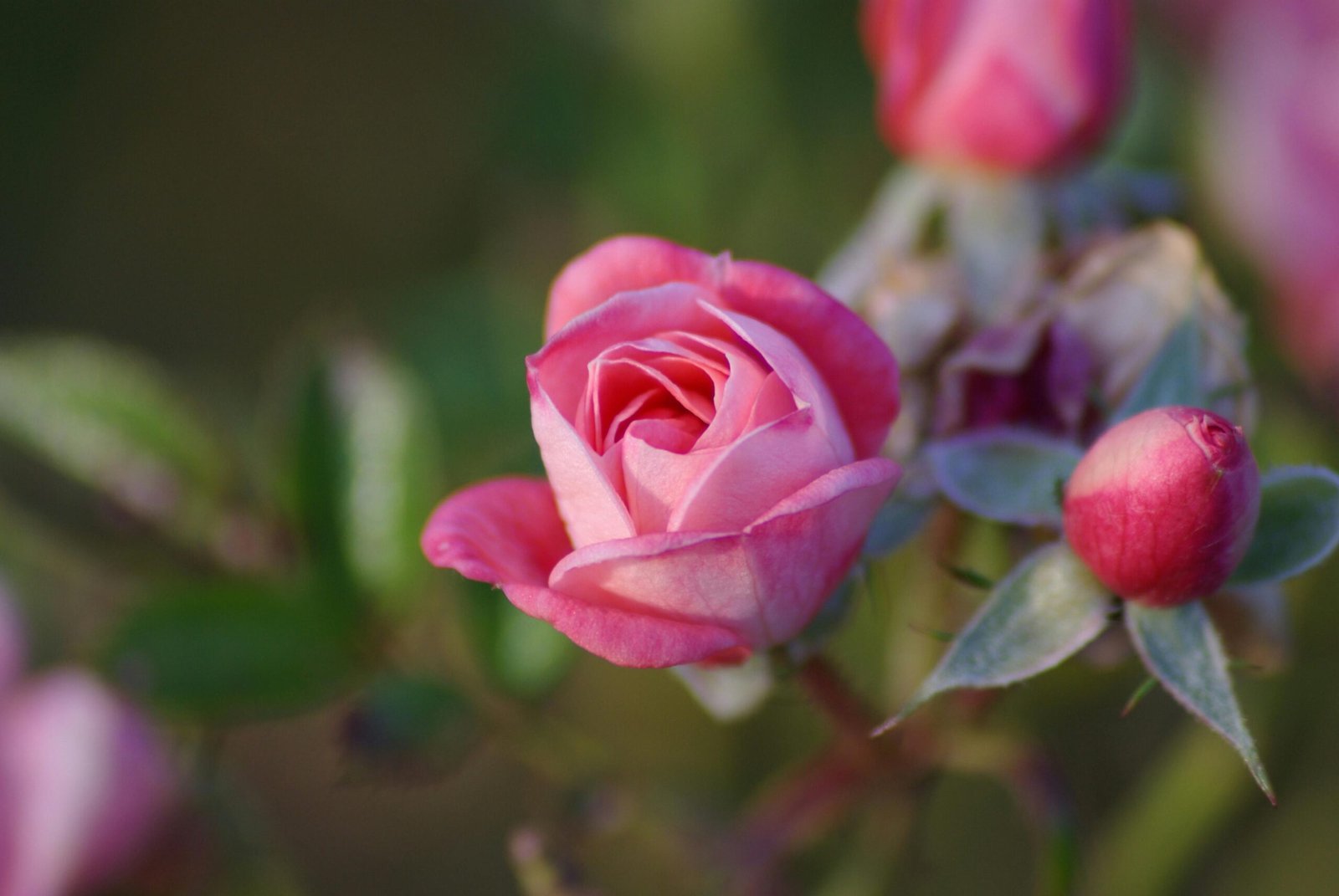
Choosing the Right Soil
Understanding the Importance of Soil
Soil is the foundation of any successful container garden. It provides essential nutrients, moisture retention, and a stable environment for plant roots. It’s important to choose a high-quality soil mix specifically designed for container gardening. These mixes are lightweight, well-draining, and have a balanced composition of organic matter and minerals.
Avoid using regular garden soil for container gardening, as it tends to be heavy and poorly draining, leading to waterlogged roots and nutrient deficiencies. Investing in a quality potting mix will ensure the optimal growing conditions for your plants.
Creating DIY Potting Mixes
If you prefer a more hands-on approach or have specific needs for your container garden, you can create your own potting mixes. A basic homemade potting mix can be made by combining equal parts of sterile garden soil, compost or well-rotted manure, and either perlite or vermiculite. This mixture provides a good balance of nutrients, drainage, and moisture retention.
For specialized plants that require specific soil conditions, such as acid-loving plants or succulents, consider researching and creating a custom potting mix tailored to their requirements. This will ensure the best possible growing environment for your chosen plants.
Fertilization and Nutrient Requirements
Container-grown plants often require more frequent fertilization compared to plants in the ground. The limited space and nutrients available in containers can be depleted more quickly. Choose a slow-release organic fertilizer specifically formulated for containers and follow the instructions for application rates. Additionally, supplementing with liquid fertilizers or organic compost tea every few weeks can provide an extra boost of nutrients to support healthy plant growth.
Regularly monitor your plants for any signs of nutrient deficiencies, such as yellowing leaves or stunted growth. Adjust the fertilization routine accordingly to provide the necessary nutrients for optimal plant health and productivity.
Planting Techniques
Seed Starting in Containers
One of the joys of container gardening is the ability to start plants from seeds directly in the containers. This allows you to witness the entire life cycle of your plants, from seed to harvest. To start seeds in containers, fill them with the prepared potting mix, leaving about an inch of space below the rim. Plant the seeds according to their recommended depth and spacing, ensuring they are covered with the appropriate amount of soil. Water gently to moisten the soil and create a favorable environment for germination.
Transplanting Seedlings
Transplanting seedlings into containers is another common planting technique. Once your seeds have germinated and developed their first set of true leaves, they are ready to be transplanted into individual containers. Use a small trowel or your hands to carefully lift the seedlings, trying not to disturb the delicate roots. Dig a hole in the new container that is slightly larger than the root ball of the seedling. Gently place the seedling in the hole and backfill with soil, pressing lightly to secure the plant. Water thoroughly to help the roots establish in their new environment.
Direct Planting in Containers
For some plants, such as herbs or compact vegetables, direct planting in containers is an efficient and straightforward method. Prepare the containers by filling them with the appropriate potting mix. Make sure to leave enough space for the mature size of the plant. Create a small hole in the soil and carefully place the plant’s root ball in the hole. Backfill the hole with soil, pressing lightly to eliminate any air pockets. Water thoroughly to settle the soil and provide hydration to the newly planted plants.
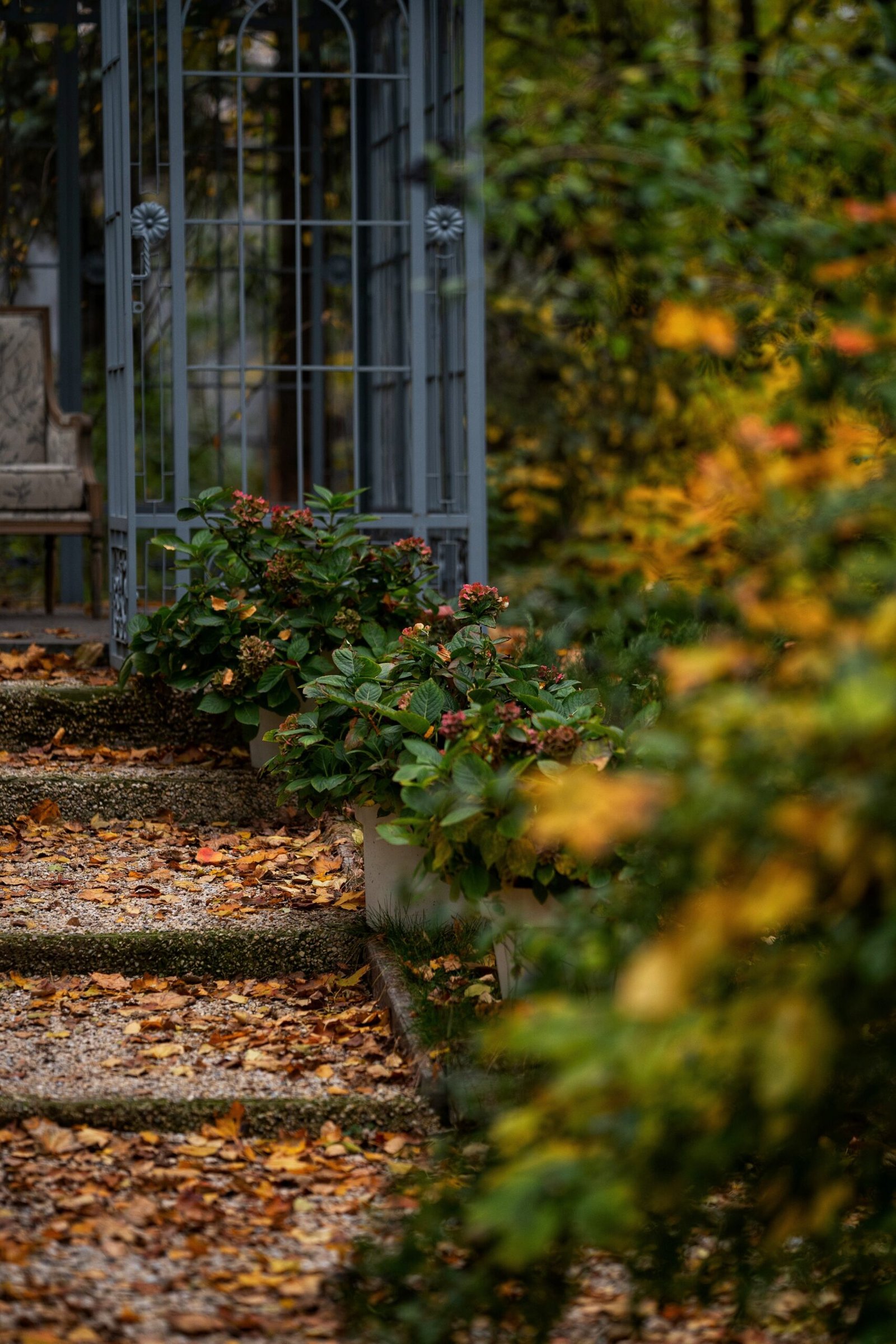
Watering and Maintenance
Watering Frequency and Techniques
Proper watering is crucial for the health and productivity of your container garden. Containers often dry out more quickly than plants in the ground, so it’s essential to monitor the moisture levels regularly. The frequency of watering will depend on various factors, such as plant type, container size, climate, and season.
To water effectively, thoroughly saturate the soil until water seeps out of the drainage holes. Wait until the top inch of soil feels dry before watering again. Avoid overwatering, as it can lead to root rot and other water-related issues. It is always better to underwater slightly than to overwater your plants.
Avoiding Common Watering Mistakes
Two common watering mistakes to avoid in container gardening are underwatering and overwatering. Underwatering can cause plants to become dehydrated, resulting in wilting and stunted growth. Overwatering, on the other hand, can suffocate the roots and lead to root rot or mold growth.
A helpful technique to avoid both extremes is to check the soil moisture regularly by sticking your finger about an inch into the soil. If it feels dry at that depth, it’s time to water. Also, observe your plants for any signs of distress, such as drooping leaves, and adjust your watering routine accordingly.
Practical Tips for Fertilization and Pruning
Fertilization and pruning are essential maintenance practices in container gardening. Regularly fertilizing your plants with a balanced organic fertilizer will replenish the nutrients that the plants consume. Follow the recommended application rates on the fertilizer package and adjust based on the specific needs of your plants.
Pruning is another important task to promote healthy growth and shape your plants. Remove any dead or yellowing leaves regularly, as they can attract pests and invite diseases. Pinch back the tips of plants to encourage bushier growth, and thin out crowded areas to improve air circulation. Additionally, remove any spent flowers or fruits to redirect the plant’s energy towards producing new growth and an abundant yield.
Dealing with Pests and Diseases
Identifying Common Container Gardening Pests
Container gardening is not immune to pests, and it’s important to be vigilant in spotting and preventing infestations. Common pests in container gardens include aphids, slugs, snails, spider mites, and whiteflies. Keep an eye out for any signs of chewed leaves, webbing, or sticky residue on the plants. Early detection is key to preventing pest populations from getting out of control.
Preventing and Managing Diseases
Diseases can also pose a threat to the health of your container garden. Fungal diseases such as powdery mildew and root rot are common in containers with poor air circulation or overwatering. Avoid overwatering, maintain proper spacing between plants, and provide adequate ventilation to minimize the risk of fungal diseases. Additionally, avoid working with plants when they are wet, as moisture can facilitate the spread of diseases.
If you notice any signs of diseases, such as discolored leaves, leaf spots, or wilting, act promptly to prevent further spread. Remove and destroy any infected plant material, and consider using organic fungicides or biological controls to manage the disease.
Natural Pest Control Methods
In addition to preventing and managing pests and diseases, you can also employ natural pest control methods. Introduce beneficial insects into your container garden, such as ladybugs, lacewings, or predatory mites, to feed on common pests like aphids or spider mites. Planting companion plants, such as marigolds or nasturtiums, can also help repel pests and attract beneficial insects to your garden. Additionally, homemade insecticidal sprays made from ingredients like neem oil or garlic can provide a natural and safe solution to combat pests.
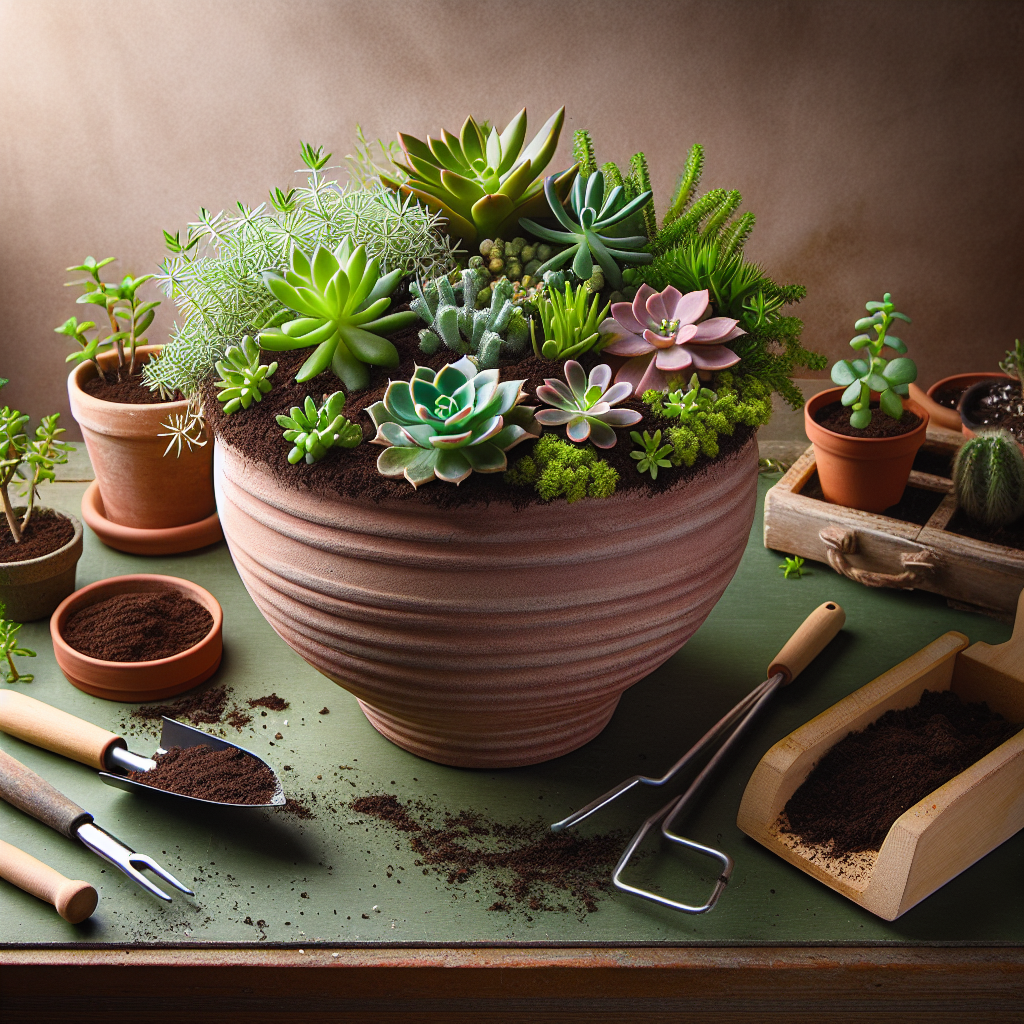
Harvesting and Enjoying Your Yield
Knowing When to Harvest
The moment you’ve been waiting for has arrived – it’s time to harvest your homegrown produce! Knowing the right time to harvest your crops is essential, as it ensures optimal flavor and texture. Each plant has its own indicators of readiness for harvest, such as color changes, firmness, or size. Refer to seed packets, gardening books, or online resources for specific guidelines on when to harvest each plant variety.
Storing and Preserving Homegrown Produce
Once harvested, it’s essential to handle and store your homegrown produce properly to maintain its quality and freshness. Remove any dirt or debris and, if necessary, rinse lightly before storage. Some crops, like root vegetables or winter squash, can be stored in a cool and dry place for several weeks or months. Others, like leafy greens or herbs, are best consumed fresh and should be used immediately after harvesting. Consider preserving excess produce through methods like canning, freezing, or drying to enjoy the flavors of your garden year-round.
Delicious Recipes Using Garden Fresh Ingredients
One of the joys of container gardening is being able to turn your harvest into delicious meals. Get creative in the kitchen and explore the many ways to incorporate your garden-fresh ingredients into tasty recipes. Savor the flavors of sun-ripened tomatoes in a refreshing Caprese salad or enjoy the harvest of herbs in a flavorful pesto sauce. Use your bountiful harvest of zucchini to make savory fritters or whip up a batch of homemade salsa using your freshly picked peppers and onions. The possibilities are endless when you have a thriving container garden at your fingertips.
Troubleshooting Common Issues
Wilting and Overwatering
Wilting is a common issue in container gardening and can be caused by both underwatering and overwatering. If your plants are wilting, check the soil moisture levels and adjust your watering accordingly. Wilting can be a sign of underwatering, in which case you should water thoroughly to revive the plants. However, it can also be a sign of overwatering, which can suffocate the roots and lead to root rot. Ensure proper drainage and adjust your watering routine if overwatering is the issue.
Nutrient Deficiencies
Nutrient deficiencies can manifest in various ways, such as yellowing leaves, stunted growth, or poor fruit production. These deficiencies are often a result of imbalanced soil nutrients or poor nutrient availability. Regularly fertilize your container garden using a balanced organic fertilizer to replenish the nutrients in the soil. If you notice specific symptoms, such as yellowing leaves indicating a lack of nitrogen, adjust your fertilization routine or consider using organic supplements to address the specific nutrient deficiency.
Preventing Root Rot
Root rot is a fungal disease that affects the roots of plants, leading to wilting, yellowing leaves, and stunted growth. It is often caused by overwatering or poorly draining soil. To prevent root rot, ensure that your containers have proper drainage holes and use a well-draining potting mix. Avoid overwatering and allow the soil to dry slightly between waterings. If you suspect root rot, carefully remove the affected plant, trim away any unhealthy roots, and replant it in fresh soil. Adjust your watering routine to prevent further occurrences of root rot.
Container gardening provides endless opportunities for growing your own plants, whether you have a sprawling backyard or a small balcony. By choosing the right containers, selecting the perfect location, picking suitable plants, preparing the containers, using the right soil, employing proper planting techniques, and practicing sound watering and maintenance habits, you’ll be well on your way to a flourishing container garden. Don’t shy away from troubleshooting common issues, understanding pests and diseases, and enjoying the fruits of your labor. So roll up your sleeves, grab your gardening gloves, and embark on the rewarding journey of homemade container gardening.
